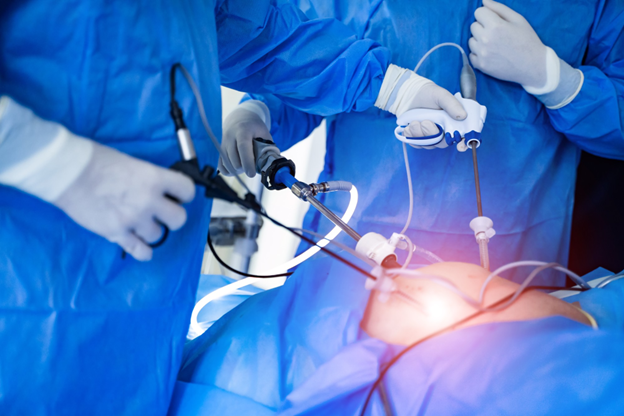When it comes to gallbladder issues, surgical removal can often become necessary. Laparoscopic cholecystectomy is a popular method today due to its minimally invasive nature. In this article, we’ll explore key aspects of this procedure, why it’s favored over traditional surgery, and the benefits it provides. We’re here to simplify the complexity around this topic, demystifying the process, recovery, and lifestyle changes one might experience post-operation.
Demystifying Laparoscopic Cholecystectomy
Simply put, laparoscopic cholecystectomy is a modern surgical technique used to remove the gallbladder. Unlike the more traditional open cholecystectomy, this procedure involves small cuts and is less invasive. Due to advancements in technology, patients often experience less pain and quicker recovery times. In recent years, this approach has improved in precision, making it a preferred choice for surgeons and patients alike.
The Necessity of Gallbladder Removal
Many factors can lead to the need for gallbladder removal. Common conditions include gallstones, which can cause severe pain, as well as gallbladder inflammation or infection. Symptoms prompting this surgery often involve prolonged abdominal pain, nausea, and vomiting. When these symptoms persist, a doctor might suggest laparoscopic cholecystectomy to prevent complications and improve quality of life.
Unveiling the Laparoscopic Cholecystectomy Procedure
Before undergoing the laparoscopic cholecystectomy procedure, patients must follow specific pre-surgery instructions. This might involve fasting and avoiding certain medications. Once in the operating room, the patient is put under anesthesia, ensuring they feel no pain during the operation.
The surgery begins with small incisions around the abdomen. Through these, a tiny camera and surgical tools are inserted to remove the gallbladder. The camera allows for a clear view inside the body, guiding the surgeon. This technique ensures precise removal without the need for large cuts, making the laparoscopic cholecystectomy procedure efficient.
Typically, the procedure lasts about an hour. Afterward, patients are monitored as anesthesia wears off. Recovery in the hospital can be brief, often just a few hours or overnight. Here’s what generally happens post-surgery:
- Initial recovery takes place in the hospital.
- Patients are closely monitored for complications.
- Instructions about at-home care and medication are provided.
Why Choose Laparoscopic Over Traditional Surgery?
Many opt for laparoscopic cholecystectomy over traditional surgery due to its minimally invasive nature. Since it uses small incisions, recovery is faster, and the pain felt afterward is less. Additionally, patients often experience smaller scars, which is a significant plus. For anyone facing gallbladder removal, considering these benefits can be reassuring in making an informed decision.
Potential Risks and Complications to Consider
While laparoscopic cholecystectomy is generally safe, like any surgery, it carries risks. Common complications might include bleeding or infection at the incision sites. Rarely, issues like injury to nearby organs could arise. Factors increasing risks can include underlying health issues.
To minimize these risks, it’s crucial to follow all pre- and post-operative instructions closely. Ensuring thorough communication with healthcare providers can aid in anticipating and managing potential complications efficiently. Remember, being informed helps tackle unforeseen events confidently.
Guiding Through the Recovery Process
Recovery from laparoscopic cholecystectomy is typically quick. Immediately post-operation, expect to be under observation in a recovery room. Nurses will monitor your vitals and manage any discomfort effectively.
At home, care involves keeping incision areas clean and dry. Pain management is crucial and often involves prescribed medication. Avoid heavy lifting and straining initially.
Here’s a basic roadmap for recovery:
- Rest adequately and follow prescribed activities.
- Gradually reintroduce normal activities but listen to your body.
Diet-wise, stick to light, easy-to-digest foods initially. Over time, shift to your regular diet as tolerated. Monitoring your body’s reaction to different foods can aid in a smoother transition.
Life Post-Gallbladder Removal: Adapting and Thriving
Post-surgery, you might wonder how the absence of a gallbladder affects life. Generally, digestion continues normally, albeit with slight adaptations. Some people might need to modify their laparoscopic cholecystectomy diet to optimize gut health.
Diet modifications could include:
- Incorporating more fiber-rich foods.
- Reducing high-fat and spicy meals.
These changes can aid digestion and enhance life quality. The best part? Most individuals experience minimal disruption to their usual activities, proving adaptability post-surgery.
Recognizing When to Seek Medical Help
Recognizing complications early is essential. Look out for symptoms like severe abdominal pain, fever, or yellowing of the skin post-surgery. These could signify problems needing prompt medical attention.
Distinguishing typical recovery discomfort from concerning signs ensures timely intervention. Always consult your doctor if doubts arise following laparoscopic cholecystectomy.
Conclusion: Embracing Knowledge and Medical Guidance
Understanding laparoscopic cholecystectomy empowers you to make informed health decisions. This article highlights its methodology, benefits, and potential risks, ensuring clarity.
Remember, while general knowledge is crucial, personal medical advice from professionals is non-negotiable. Always prioritize consultations with healthcare providers to tailor the best course of action for your specific needs.

